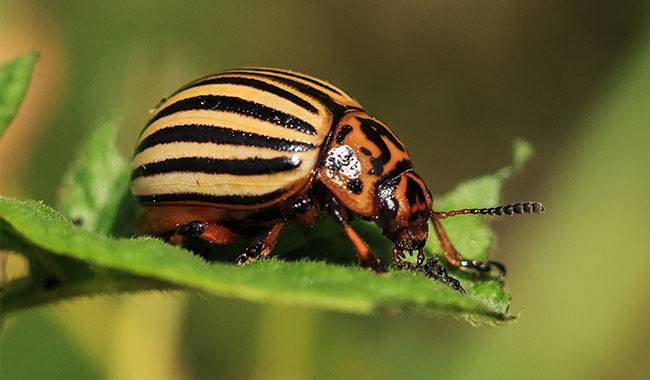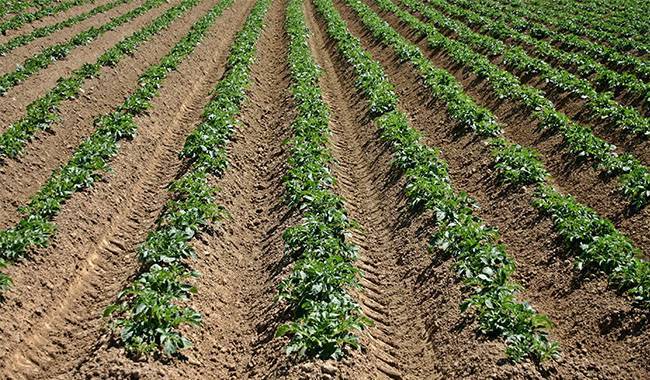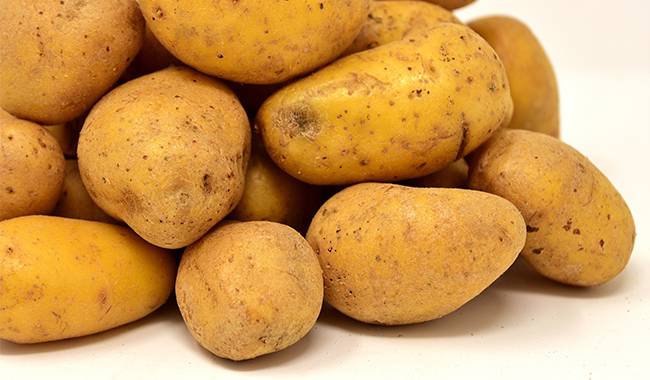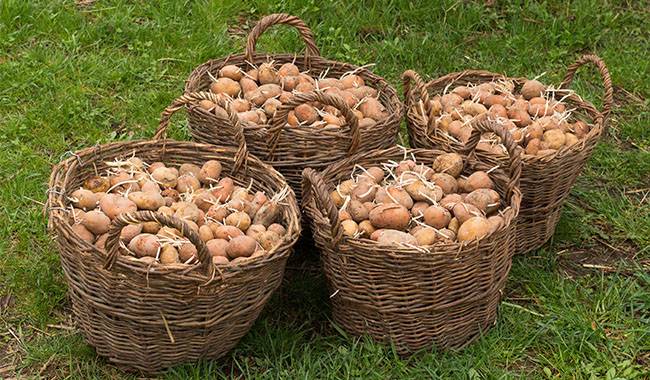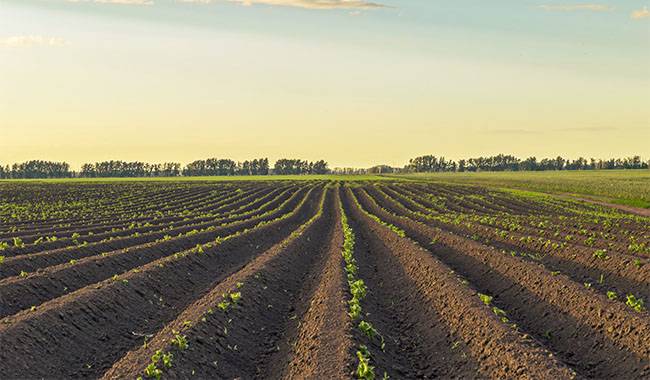
The potato is the second most important food, a vegetable we can no longer imagine ourselves living with. Almost every dish has potatoes in one form or another, and almost every plot of land has potatoes allocated for it. Unfortunately, not everyone knows how to grow potatoes properly and does not understand the basic rules of agricultural techniques for this crop, which is why yields are sometimes low.
Today we will unveil the mystery of an important potato cultivation technique, hilling potatoes.
WHAT ARE HILLING POTATOES?
As the name suggests, the activity consists of dusting the base of the potato bush with soft, loose soil. What potatoes sometimes need in order to obtain high yields is weed control, pest control, and proper hilling potatoes, which can sometimes reliably withstand unfavorable climatic factors.
What is the right hilling potatoes is determined not only by the rules of the method but also by the right timing of hilling potatoes? Sometimes it is the first hilling potatoes that determine when to do it, then the second step is to know when to hilling potatoes again, and the third step is to know at what time of the day it is safest for the potato plant to start the ridge.
When hilling, it is important not to damage the young shoots and root system. This is the most common mistake: after all, if they are severely damaged (sometimes even slightly), it can have an extremely negative effect on the plant’s growth and development, and with severe damage to the shoots, it is possible to kill the bush or large parts of it altogether.
As for timing, experts and “ordinary” gardeners have different opinions. The only thing they may have in common is that the date of hilling potatoes should be chosen according to the height of the potato shoots, but the exact numbers sometimes vary widely.
For example, some claim that the first planting can be done when the stalk is 5inch (12 cm) high, some at 6inch (15 cm), others at 7inch (18 cm), and so on up to 8inch (20 cm). Sometimes one reads that the first action should be taken when the stem grows to 2-3inch (6-8 cm) or, more commonly, that it depends on intuition (depending on the weather, soil, etc.).
Indeed, you may be confused, but we will still be guided entirely by the advice of “experienced people”, so they recommend dipping the potatoes early and not to delay, as it is likely to reduce the number of weeding and loosening of the soil. In addition, in colder areas, weeding protects (and sometimes literally saves) plants from late return frosts.
And the timing of the first wedding depends on when you plant your potatoes. For example, if you plant potatoes at the traditional planting time, i.e. at the beginning of May, the initial burial can already take place in the middle of the month, when the shoots are already actively developing. At this point in time, hilling will play a dual role. Also a protective one.
FIRST HILLING OF POTATOES
Although there are many different recommendations, let’s hear from the professionals: they recommend first hilling potatoes when the stems are 2-3.5inch (6-9 cm) above ground level. however, if a strong cold spell, including frost, is expected, it is perfectly acceptable to cover the entire bush with soil, “with the head and tail”. If no frost is expected, there is no need to cover the bush completely, as this protection will inhibit the development of the plants.
In this case, it is sufficient if you raise the soil around the potato plants by about 1 inch. The first hoeing can be done with a power cultivator or by hand, with a hoe, preferably with a hand-held tool, but if you have a power cultivator, it is fine to use it. The main thing is to take as much soil as possible from between the rows and to stack the plants evenly on the hill so that the soil is on all sides, not on one or two sides.
THE SECOND HILLING POTATOES
The next point of contention was no longer the timing of the first fall, but the number of falls. But here, most gardeners do agree: The number of hilling potatoes should be three or four, and never less than two.
Therefore, after the first hilling potatoes, the second should be done when the potato tubers have already started to form. Usually, this will be 15 to 18 days after the first hilling potatoes, so if you plant in early May and do the first hilling potatoes in mid-May, the second hilling potatoes can be done in early June.
The main thing is to be on time before flowering because, during flowering, experts recommend that potato plants do not come out of the mud and, in general, try to avoid unnecessary contact with them.
The second action is more complicated and time-consuming, so it is not possible to run down the rows and gently warm up the soil, as in the first action. During the second hilling, it is important to make sure that the ridge height next to each potato is 6-6.5inch (15-17 cm), otherwise, the tubers may bulge out of the soil and accumulate in it due to sun exposure and the accumulation of lycopene toxicants, which will give the tubers an atypical green color.
THIRD HILLING POTATOES AND BEYOND
Then comes the third planting, which is usually done when potato shoots reach a height of 9-10inch (23-26 cm). When using this hoeing method, care must be taken not to cover a large part of the plant, as many do; this is a mistake, but a little soil should still be placed between the shoots. This method will allow the potatoes to start growing wider. Thus, when the third pull is complete, the ridge should be 6.5-7.5inch (17-19 cm) high.
The third tillage is not something everyone does, but it has still proven to help increase potato yields, so the third tillage should not be neglected if possible. If the bush starts to fall apart and there is no nesting along the ridge, third hilling potatoes should definitely be done.
When the potato plants are very vigorous, as in nutrient-rich, well-watered soils, when the bushes are aggressively cross-grown and wide, and even when the tubers sometimes stick out of the ground after three hilling potatoes, it is perfectly fine to do fourth hilling potatoes.
WHAT IS THE BEST TIME TO MAKE SEED POTATOES?
So, we’ve learned when to make hilling potatoes on the calendar and how many times to do it, now let’s talk about the timing of these hilling potatoes. Beginners who are growing potatoes for the first time often ask this question.
Every one of us, especially on our large estates, has seen gardeners working on potatoes during the daytime hours. It is true that people get up early, arrive in the middle of summer, eat, and take their hoes to the field at noon, a little earlier, and a little later.
Is it true that at noon and closest to noon, when the sun tends to literally sizzle, it is most active? Actually, no, it’s not true: Many gardeners have noticed that after a potato bumper crop at noon, the bushes actually wilt in the evening.
The problem is that during the hottest time of the day, when plants are particularly sensitive to all kinds of work, we also put the bushes on soil that is often intensely heated, which sometimes leads to severe water loss and reduced swelling. Taking this into account, the best time to work on potato hilling potatoes is in the morning or late afternoon. The operation should be completed by 10-11 p.m. and continue after 6 p.m. Of course, if the weather is gloomy, the filling is likely to take place at any time of the day.
By the way, it is considered most beneficial for potatoes to hold the transplanting after the rain, due to the fact that the soil gets well moistened and does not fester after transplanting, which saves you time and energy later. In addition, the moist soil added to the shoots will stimulate the formation of underground stems, on which tubers will later form, thus increasing the yield of a plant and the entire plot.
If you have no other choice but to turn the soil at midday, we strongly recommend that you water the pot thoroughly before turning, which will cool the topsoil and increase the expansion of the plant.
ARE HILLING POTATOES ALWAYS NECESSARY?
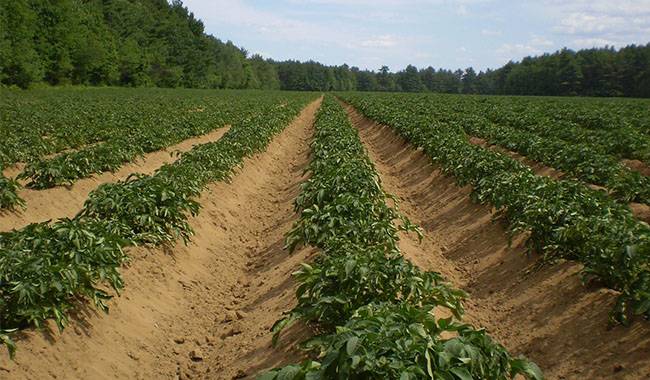
So the debate among vegetable growers, especially in recent years, has been not only about the timing and quantity of hilling potatoes, but also about the overall feasibility of the measure. Many frankly say that weeding only adds more work to the difficult task of growing potatoes – weeding, pest and disease control, planting and harvesting – and is quite labor-intensive.
So let’s look at the obvious advantages of potato hilling potatoes and a few examples of growing this crop with different techniques, which at this point don’t require hilling potatoes at all before you decide whether you want to do it.
The obvious and indisputable advantage of potato hilling potatoes is accelerated growth and development, both of the above-ground and underground parts (roots and tubers), if, of course, do not exceed the specified height of hilling potatoes and do not cover the plant with “heads”, except for the first time, if it is necessary to prevent frost.
Another advantage is the improvement of air and water exchange in the soil, due to the absence of soil crust formation on its surface. Another reason in favor of hilling potatoes is that not only protects the plants from the cold, but also prevents drying, which is very important for the country house, where we go from time to time, if we can carry out additional soil moistening and watering of plants in the area where we live, and if it is very dry and hot, we can return to the country house already dry buds.
As we have already written, it is very good to hilling potatoes after rain, the moisture is delayed as much as mulching the soil and comes to the roots without evaporating away.
In addition, mulching allows fighting weeds at the same time, because we are actually covering the soil with another layer, thus inhibiting the growth of weeds, so the potatoes will have no competitors and will get more nutrients and water.
In addition, thanks to the hollowing out, the shrubs become slimmer and look like a bunch of flowers in a vase; they don’t disintegrate and overgrow, so they don’t shade out neighboring plants. Through skillful site planning and the use of perches, 10-15% more plants can be placed on the same area than when planted without perches, and a larger crop can be harvested.
Finally, as we have already mentioned, hilling potatoes will protect the tubers from contact with sunlight and avoid the accumulation of lycopene. Don’t forget that lycopene is a poison that is particularly high in potatoes exposed to sunlight, giving them a greenish tinge.
Of course, the lethal amount or dose when we feel poisoned is quite large for a person, but it is still necessary to tempt fate and poison your body unnecessarily.
Naturally, in order for the habitat to bring all the benefits, the plants must be treated with care. When carrying out weeding, it is important to try to avoid all kinds of damage to the above-ground parts of the potato and its root system, otherwise, it will not improve the condition of the plant, but will worsen it. Remember, there is no need to rush the process, and if you are short on time, it is best to extend the climb to two or three days.
ALTERNATIVES TO HILLING POTATOES
Finally, as we promised, a few examples of growing potatoes without hilling potatoes. The first method is to use black non-woven mulch sheets. Here, not everyone, not even always the soil, is tilled.
Usually, the mulch material is placed on the soil in layers, preferably tilled and leveled beforehand, then holes are drilled in it and the tubers are planted according to the potato planting plan. Then, if the weather is hot and dry, it remains only to water the plants and to control pests and diseases.
The second method is the opposite of mounting and unmounting. Instead, here we do not collect the traction in a pile and spread it on the surface of the soil. Then cover each stem with a layer of soil about 1 inch thick, leaving only the top of the stem. But this method involves additional weed control and loosening of the soil.
So, we have told you how, when, and at what time of the day hilling potatoes is better. Depending on the merits of this event, you decide whether it is worthwhile to carry out weeding or to use black wool mulching material, or to try a different technique for growing potatoes.
If you decide to experiment, the main thing is not to use the whole plot for the “experiment” but to allocate only a part of it first, so that if a new method will be effective and once you have crossed all the previously acquired knowledge of potato growing techniques, the next year you can give the whole area to the “know-how” and if this method is ineffective or inefficient, then you have little to lose.
More related information about growing potatoes plants




